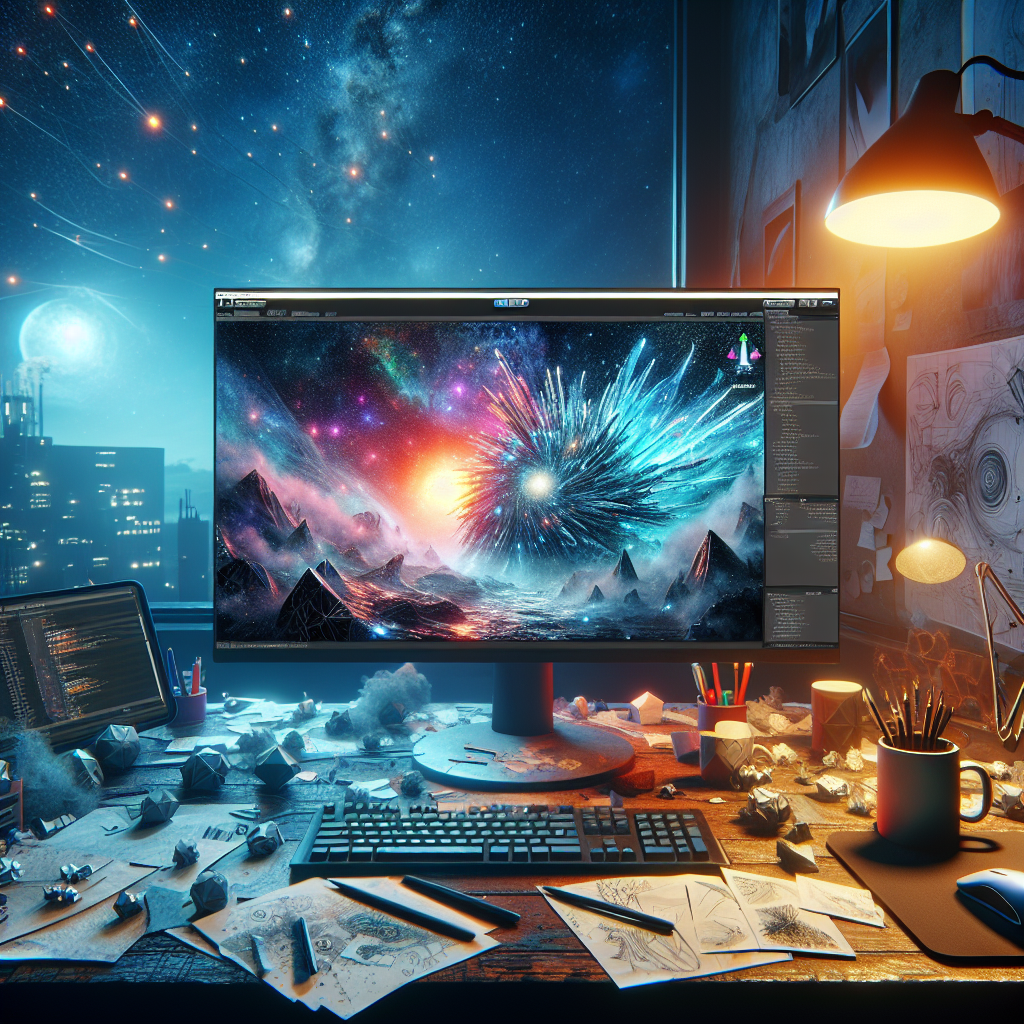The Art of Game Design: Tips for Creating Stunning Visuals in Unity
Creating visually captivating games is an essential part of game design that brings an interactive experience to life, imbuing it with personality and allure. Unity, one of the most popular game development engines, offers extensive resources to help developers craft stunning graphics that captivate players. Whether you’re a beginner or an experienced developer, understanding how to utilize Unity’s tools effectively enhances your game’s aesthetic appeal. Here are some essential tips for creating stunning visuals in Unity.
1. Mastering the Basics of Unity’s Interface
Before diving into visual design, familiarize yourself with the Unity interface. Understanding the layout, from the Scene view to the Game view, will streamline your creative process. Know where to find essential tools, such as the Hierarchy, Inspector, and Asset Store. This knowledge forms the foundation for building and manipulating game assets effectively.
2. Leverage High-Quality Assets
The first step to achieving stunning visuals is to use high-quality assets. Unity supports various asset types, from 3D models to textures and sprites. Utilize websites like the Unity Asset Store or platforms like Sketchfab and TurboSquid to source professional-grade assets. Be mindful of the style and theme of your game when selecting these assets, as consistency is key in creating an immersive environment.
3. Effective Lighting Techniques
Lighting can make or break the visual appeal of a game. Unity offers different lighting systems such as baked lighting, real-time lighting, and light probes. Experiment with these to create ambiance and mood tailored to your game’s narrative. Consider using:
- Directional Light: For simulating sunlight or moonlight.
- Point Lights: For localized light sources (like candles or lamps).
- Spotlights: For focused areas, creating dramatic effects and shadows.
- Ambient Light: To achieve a balanced lighting environment.
Combining these different lighting sources can create depth and enhance the visual storytelling of your game.
4. Materials and Textures
Developing a solid understanding of materials and textures is crucial for achieving realism. Unity’s Standard Shader allows you to customize the appearance of your materials efficiently. Pay attention to:
- Albedo: The common color of the surface.
- Metallic and Smoothness: To define how reflective and polished a surface looks.
- Normal Maps: They create the illusion of more complex surface details without increasing the polygon count.
Consider using substance textures or photogrammetry techniques to achieve realistic rendering while ensuring the assets fit seamlessly within the game’s aesthetic.
5. Post-Processing Effects
Post-processing can dramatically enhance the overall aesthetic of your game. Unity’s Post-Processing Stack offers various effects like bloom, depth of field, color grading, and vignette. These effects can be used creatively to polish your visuals and create a cohesive atmosphere. However, moderation is vital — too many effects can lead to visual clutter, undermining the clarity of your game.
6. Optimize Performance
Beautiful visuals should not come at the cost of performance. Understanding how to manage resources efficiently is essential in game development. Use Level of Detail (LOD) for 3D models, bake lighting for static objects, and implement occlusion culling to improve frame rates without sacrificing visual quality. Regularly test your game on different hardware to ensure that performance remains optimal across devices.
7. Storytelling Through Environment Design
Every aspect of your game should contribute to storytelling. Use environment design to communicate themes and emotions. For example, a dark, desolate environment might evoke feelings of despair, while a vibrant, bustling scene can induce joy and excitement. Craft your landscapes, textures, and lighting to reflect the narrative, immersing players further into the game world.
8. Stay Updated and Learn from Others
The gaming industry evolves rapidly; trends, tools, and techniques are continuously advancing. Stay updated with the latest Unity features and follow seasoned designers through forums, YouTube channels, and social media platforms. Engaging with the community can provide inspiration, insights, and valuable feedback on your work.
Conclusion
Creating stunning visuals in Unity is an art form that combines technical skills, creativity, and an understanding of design principles. Mastering Unity’s environment, leveraging high-quality assets, optimizing lighting and textures, and employing post-processing effects can significantly elevate the aesthetic value of your game. By integrating these tips into your design process, you’ll not only create beautiful visuals but will also enhance the overall player experience, drawing them into the compelling worlds you craft. Embrace the challenge, experiment boldly, and let your creativity shine!




